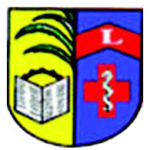
Metal exposure and congenital malformations in the Katangan Copperbelt

On 25 March, Tony Kayembe successfully defended his PhD project. His research on the link between metal exposure and congenital malformations in Lubumbashi (Democratic Republic of the Congo) was divided into three different studies. « First, we did an epidemiological case-control study, the KMC (Katanga Malformations Congénitales) study, which also provided the framework for the other two studies, » Tony explains. « In addition to the KMC study, we described specific clinical conditions and made an analysis of the placental transfer of toxic metals (especially cobalt) based on the data we obtained from the KMC study. The main general conclusion was that fathers’ mining jobs play a role in the occurrence of birth defects in newborns in the former province of Katanga. »
There had been reports of a high frequency of congenital malformations among children of mineworkers in the region, but no concrete studies had investigated the health impact of the heavy environmental pollution in the Katangan Copperbelt, a region with intense mining and metal smelting. « I am the first one who has written an elaborate report on this topic in this region, » Tony says proudly. « The risk of being born with a visible birth defect was significantly higher when having a father with a mining-related job , » he explains. “These outcomes suggest that legislation enforcements and advocacy are needed to protect the population in this area.”
Tony took the step to a PhD after the University of Lubumbashi issued an application for potential PhD candidates. He took his chance and participated in the selection process. « I was already working as a doctor in a public hospital (National Service) and there I saw the possible link between newborns with congenital malformations and the mine area. I was eager to do research on this topic’. » And with a positive result, he was selected for starting a PhD with a scholarship. « That’s how I ended up at KU Leuven. Through VLIR-UOS they had a partnership with the local university here, » Tony says.
Although the covid pandemic caused some delay, Tony looks back on his PhD journey with great satisfaction. « I have learned many new skills and further developed other ones through my PhD. It has helped me to increase my knowledge and thus be able to help more people, which gives me great satisfaction. » Tony now wants to continue his work as a physician: « I will continue to follow up patients and in addition, I have now also been hired as a lecturer at the Higher Institute of Medical Technique in Lubumbashi. It gives me the opportunity to do further research in this field. »
Tony Kayembe received his PhD under the supervision of Prof. dr. Tim Nawrot (promotor) and Prof. dr. Benoit Nemery (co-promotor).


